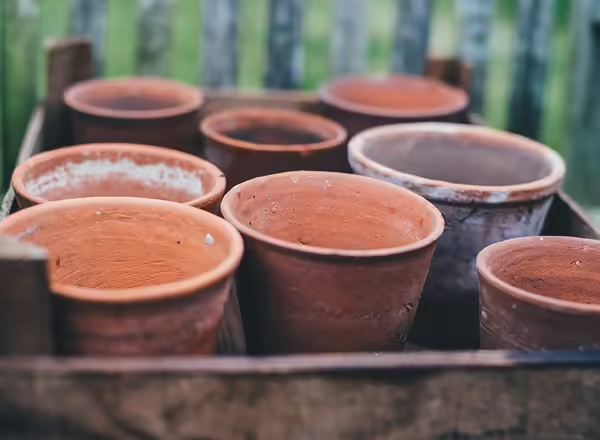Soil: Giving Life to our World
Soils are a crucial part of plant growth. Soil is taken for granted since just about everything seems to grow in soil. Many students don't recognize the importance of a good quality soil in determining plant growth.
Soils are composed of three particles -- sand, silt and clay. An ideal soil will contain 45 percent mineral particles, 5 percent organic matter from decomposing plant and animal material, 25 percent water, and 25 percent air spaces.

Objective
Students will learn about soil compaction, and it's effect on water filtration, plant growth, and seed germination.
Materials
- Two soil types, one having mostly sand and the other mostly clay
- Two soil amendments, such as peat moss, vermiculite, or perlite - approximately 4 cups of each
- Small paper cups
- Large containers such as large paper cups with holes in the bottom or flower pots also with bottom drainage
- Saucers or dishes to catch runoff
- Water
- Divide soil types and amendments into four separate groups. Label containers/pots with soil or amendment type and the letters A, B, C and D (Sand A, Sand B, etc.)
- Put two cups of soil or amendment into a paper cup and wet thoroughly by pouring a half cup of water into each. Allow to sit for an hour or more to absorb as much water as possible. If material has absorbed all the water, add another half cup and wait another hour. If water remains after an hour, drain.
- Fill each large container labeled "A" with one cup of the dry soil type or amendment. Firmly pack the material in the container with a spoon, hand, stick or tamper. For example, Sand A will contain one cup of dry sand that has been compacted. Add the term DRY COMPACTED to the label for reference.
- Fill each large container labeled "B" with one cup of the dry soil type or amendment. DO NOT PACK OR FIRM. Add the term DRY UNCOMPACTED to the label.
- Fill each large container label "C" with one cup of the moist soil type or amendment. Firmly pack the material in the container with a spoon, hand, stick or tamper. Add the term WET COMPACTED to the label.
- Fill each large container labeled "D" with one cup of the moist soil type or amendment. DO NOT PACK OR FIRM. Add the term WET UNCOMPACTED to the label.
- Set each pot above the saucer so pot doesn't sit directly in the saucer. This allows the water to drain freely and not be reabsorbed by the soil.
- Add two cups of water to each pot.
- Record how fast each soil type or amendment drains. Collect and measure the amount of water that drains from each soil type.
- Mix various soil amendments with soil types to improve or modify the drainage. Re-run the experiment.
Questions
- Which soil type drains the fastest? The slowest?
- Which soil amendment drains the fastest? The slowest?
- For each group, which soil type or amendment drains the fastest? The slowest?
- Why do packed soils drain slower than unpacked soil?
- Why is it important for soils to drain? (Roots need air in order to breath. If water doesn't drain, the roots die.)
- Why would you want a soil to drain fast?
- Why would you want a soil to drain slow?
- Mix various soil amendments with soil types to improve or modify the drainage. Re-run the experiment.
Follow-up Questions
How do ecosystems adapt to soil conditions? (Plants suited to well drained soils will dominate well drained locations - plants suited to poorly drained soils thrive in wet areas.)
Until the late 1800's, most of central and northern Illinois soils were poorly drained. Settlers changed this by installing underground tile drains and ditches, which dried out much of the area. How would this have changed the natural ecosystem? (Water loving plants could not survive in the new conditions - they were destroyed by tillage as land was converted to farmland.)